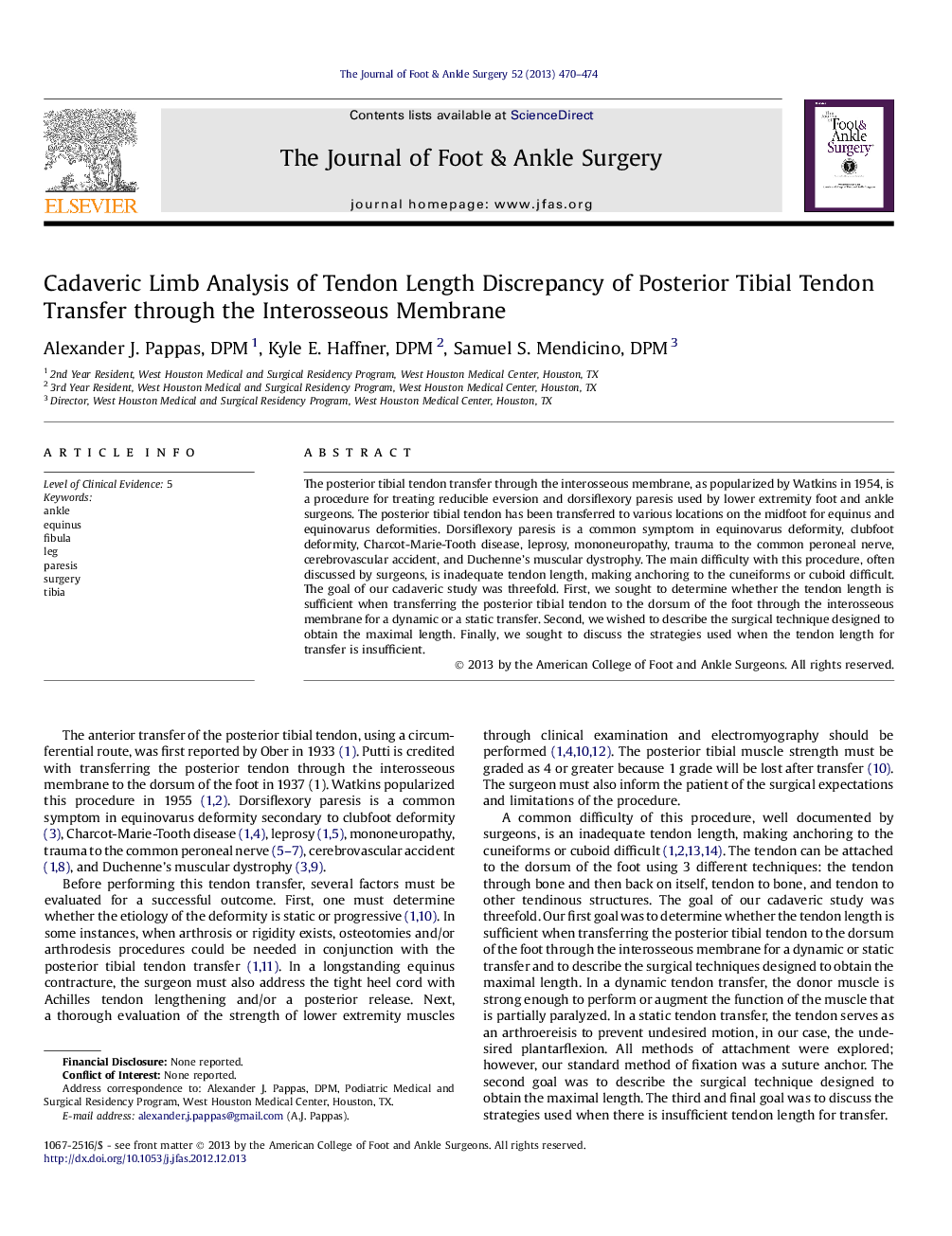| کد مقاله | کد نشریه | سال انتشار | مقاله انگلیسی | نسخه تمام متن |
|---|---|---|---|---|
| 2713138 | 1565540 | 2013 | 5 صفحه PDF | دانلود رایگان |

The posterior tibial tendon transfer through the interosseous membrane, as popularized by Watkins in 1954, is a procedure for treating reducible eversion and dorsiflexory paresis used by lower extremity foot and ankle surgeons. The posterior tibial tendon has been transferred to various locations on the midfoot for equinus and equinovarus deformities. Dorsiflexory paresis is a common symptom in equinovarus deformity, clubfoot deformity, Charcot-Marie-Tooth disease, leprosy, mononeuropathy, trauma to the common peroneal nerve, cerebrovascular accident, and Duchenne's muscular dystrophy. The main difficulty with this procedure, often discussed by surgeons, is inadequate tendon length, making anchoring to the cuneiforms or cuboid difficult. The goal of our cadaveric study was threefold. First, we sought to determine whether the tendon length is sufficient when transferring the posterior tibial tendon to the dorsum of the foot through the interosseous membrane for a dynamic or a static transfer. Second, we wished to describe the surgical technique designed to obtain the maximal length. Finally, we sought to discuss the strategies used when the tendon length for transfer is insufficient.
Journal: The Journal of Foot and Ankle Surgery - Volume 52, Issue 4, July–August 2013, Pages 470–474